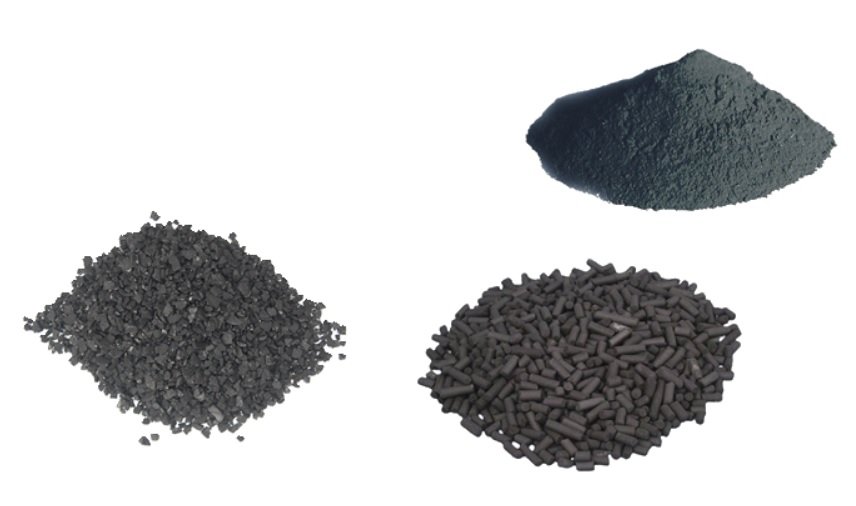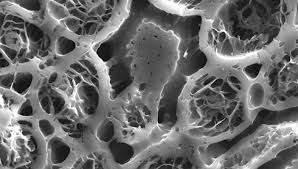Thanks to the elevated specific area, the activated carbon is capable of capturing many molecules of other substances inside of it, lodging these molecules on its extended internal surface area; in other words, activated carbon is a material with high adsorbent capacities. Activated carbon is used for the filtering, purification, deodorisation and decolourisation of fluids. Looking at them through a microscope, the activated carbons are composed of a series of burrows which become progressively smaller so as to “trap” the pollutants in the air. This structure allows them to have a very high specific surface, even up to 2500 m2/g, technically divided into macropores (>500 Angstrom), mesopores (20-500 Angstrom) and micropores (0-20 Angstrom).
Types and adsorption capacity of activated carbon
Our company can offer you several types of carbon from dust to granular flakes:
- ACFINDPOR is the Brofind trademark for activated carbon dust. The high adsorption features, achieved by its extreme purity, make the product especially suitable for this application.
- ACFINDBIT corresponds to activated carbon in flakes of various grain sizes. Its high resistance makes it suitable for reactivation.
- ACFINDZ is activated carbon in small cylinders. It is available both in vegetable and mineral form. This type of carbon can also be regenerated with steam or gas.
Features of activated carbon
- decolourisation, for example in the food industry;
- treatment of poisoning to adsorb toxins;
- treatment of industrial wastewaters;
- purification of water, for example in aqueducts;
- solvent recovery;
- support for catalysts;
- air handling (for example in cabin filters, to reduce outdoor-borne odour nuisances);
- elimination of antibiotics and fungicides in aquariums, after treatment of the intended duration (often from 2 to 4 weeks).
Regeneration The accumulation of pollutants on the surface of the activated carbon determines the gradual loss of its adsorption capacity until it completely disappears. At that point the activated carbon must be replaced or else regenerated through a regeneration or reactivation process which allows the carbon to reacquire its adsorbent properties. Regeneration can take place through:
- chemical methods, either with chemical reactants which oxidise the adsorbed organic substances, or with solvents which extract them;
- steam or inert gas (normally nitrogen) stream at relatively high temperatures (150-220 C) for the desorption of the adsorbed volatile organic compounds (VOC);
- biological regeneration processes;
- thermal processes (reactivation), actuated by heating the material in controlled environment rotating furnaces (so as not to oxidise the carbon) up to a temperature of 800-900 °C, causing the pyrolysis of the absorbed substances.
This last method is the most effective, namely thermal reactivation at high temperatures (850-2500 °C), though it entails losing part of the processed carbon.
Services provided
Choosing Brofind means:
- Customer assistance 24/7
- Impartiality in recommending pollution control technologies since Brofind is owner of many of them
- Experience in the design and manufacturing of abatement plants since 1993
See the page dedicated to Brofind services to understand how we support our customers during the entire lifecycle of the product.


